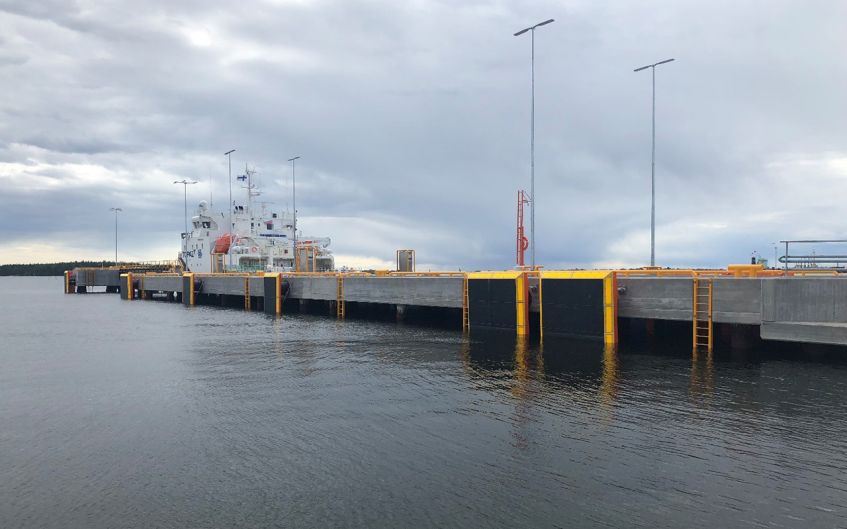Recent Posts
Marine Fender Design – Is it Important?
Blog Post by: Rob Williams
October 29, 2019

The interface between vessel and berth has long since been guarded by ‘the fender’. The controlled collision that is a vessel berthing operation and the constant movement of the vessel when alongside, relies on a fender system to prevent damage occurring to both the vessel and the quay structure. But how is best practice achieved and what problems can arise?
Given the significance of this interface, it is perhaps surprising to realise that it is not necessarily common practice for naval architects and maritime civil engineers to interact directly during the design of either a vessel or a quay structure. Reliance is instead placed on established guidance and historical reference information, to enable designers of both structures to make informed decisions. There is the risk that this reference information can be misinterpreted and incorrectly applied by both parties.
A diligent quay structure designer will likely refer to a prominent design code to assist in selecting a suitable fender system. One such code is PIANC’s “WG33 – Guidelines for the Design of Fender Systems”.
The Permanent International Association of Navigation Congresses (PIANC) is the leading reference for the design, development and maintenance of ports, waterways and coastal areas. It’s Maritime Navigation Commission Working Groups (MarCom) brings together selected international experts to provide guidance and technical advice related to waterborne transport and infrastructure within the maritime industry. Published in 2002, the current fender design guidelines have become a well-established reference for the maritime industry worldwide.
However, since publication, fender design and manufacture has continued to advance, alongside a rapid evolution in vessel design. There have been considerable changes in vessel hull sizes, hull profiles, and hull pressure capacities. The continued documentation of knowledge surrounding fender performance and vessel interaction, has led PIANC to establish Marcom Working Group WG211, to comprehensively update the original WG33 fender design guidelines, with which Waves Group have been fully involved as experts.
Fender design, selection and performance verification calls for a high degree of skill and experience and should be integrated at an early stage with the development of a new quay structure design or the replacement and retrofitting of fenders to existing quay structures.
Whilst fenders should be considered as the expendable item between the vessel and the quay, a good design, prepared by experienced designers, will maximise the operating capabilities of the fender system and reduce the risk of potential damage through unforeseen berthing scenarios during the fenders operable life.
The developments in vessel design and the requirements of a modern port interface have been recognised by PIANC. A comprehensive update to the PIANC fender design guidelines is well timed in order to provide current best practice guidance on the design and testing of fender systems.
It is important to recognise that one of the most significant considerations associated with fender design is the approach speed of the vessel onto the berth. A good fender design will account for the correct range of anticipated berthing speeds and select the correct type of fendering. This can help reduce the risk of berthing incidents and possible damage, leading to a probable reduction in fender damage claims.
The early involvement of designers, experienced with the design and specification of fender systems, including where appropriate, the early engagement with fender manufacturers, is also considered to be part of the best practice approach, which is not often highlighted within design guidance documents.
A comprehensive vessel and fender maintenance regime can also help to reduce the risk of berthing incident damage by repairing damage as soon as it is identified. For example, existing damage to a vessel belting can cause further damage to a fender panel during vessel berthing. This damaged fender panel could then lead to the damage of subsequent vessels using the berth. The initial, relatively minor damage to the vessel belting can have a compounding effect on the overall amount of damage, leading to a potentially greater overall total claim amount.
PIANC is continuing with its review of WG33 Guidelines for the Design of Fender Systems to meet the current market requirements and reduce the risk of potential fender system and vessel damage throughout the fenders operable life.
In a follow up to this article, my next blog post will feature the design, manufacturing and maintenance of fender systems around the world.

